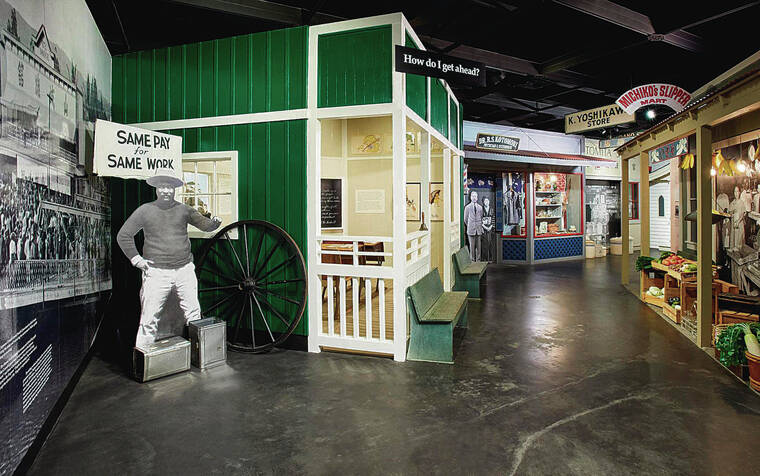The Japanese Cultural Center of Hawaii has launched virtual tours of its long-standing “Okage Sama De” exhibit.
Through early December, JCCH Opens in a new tab plans to release on Wednesdays weekly episodes that chronicle the stories and history of Japanese in Hawaii. The six-part series’ first video tour, which focuses on Japanese immigration to Hawaii, debuted last week, and the second chapter comes out today.
Opened in 1995, the “Okage Sama De” exhibit Opens in a new tabhas been closed since April 2020 due to the COVID-19 pandemic. Because it is housed in a small space on the JCCH’s Moiliili grounds, it’s difficult for visitors to physically distance, said Nate Gyotoku, the nonprofit’s president and executive director. Gyotoku said he is not sure when it will reopen.
When Gyotoku took the reins of the JCCH in January, he said creating virtual tours of the exhibit was one of his first priorities. Prior to the pandemic about 3,000 to 4,000 visitors, mostly elementary school students, visited the exhibit each year.
“With the shutdown it went to zero,” he said. “We wanted to get the content out there to the students and teachers so they can show it, but also so people who couldn’t come down to the center can see it.”
By creating virtual tours, Gyotoku said it also gives JCCH an opportunity to virtually expand the exhibit and tell more stories without worrying about space limitations. He said they plan to release six additional chapter videos, which are currently in production, next spring. The first six video tours mirror what is in the exhibit, Gyotoku said, while the next six will spotlight deeper dives into other issues.
Called “Okage Sama De,” which means “I am what I am because of you,” a phrase that expresses deep gratitude to those who came before us, the exhibit details the journey of Japanese immigrants and Japanese Americans in Hawaii, beginning with the first wave, or the “gannenmono,” in 1868. It features artifacts, murals, displays and oral history videos. Tours are led by volunteer docents, who share their personal and family stories with visitors.
Gyotoku said the project was driven by volunteer docents, who wrote scripts and are featured in the virtual tour videos.
“(The exhibit) does a good job at chronicling our community’s immigration story … along with our efforts in the war and the postwar Hawaii landscape. It’s still very impactful today,” he said. “No matter what, we’re going to continue to make more content. This is a nice way for us to breathe new life into the project.”
Watch the weekly episodes at youtube.com/japaneseculturalcenterofhawaii Opens in a new tab. Upcoming videos will be released at 8:30 a.m. on the following days: “Plantation life,” today; “Pre-World War II Hawaii,” Nov. 10; “World War II in Hawaii,” Nov. 17; “Post-World War II Hawaii,” Nov. 24; and “Cultural celebrations and local heroes,” Dec. 1.
———
Jayna Omaye covers ethnic and cultural affairs and is a corps member of Report for America, a national service organization that places journalists in local newsrooms to
report on undercovered issues and communities.

